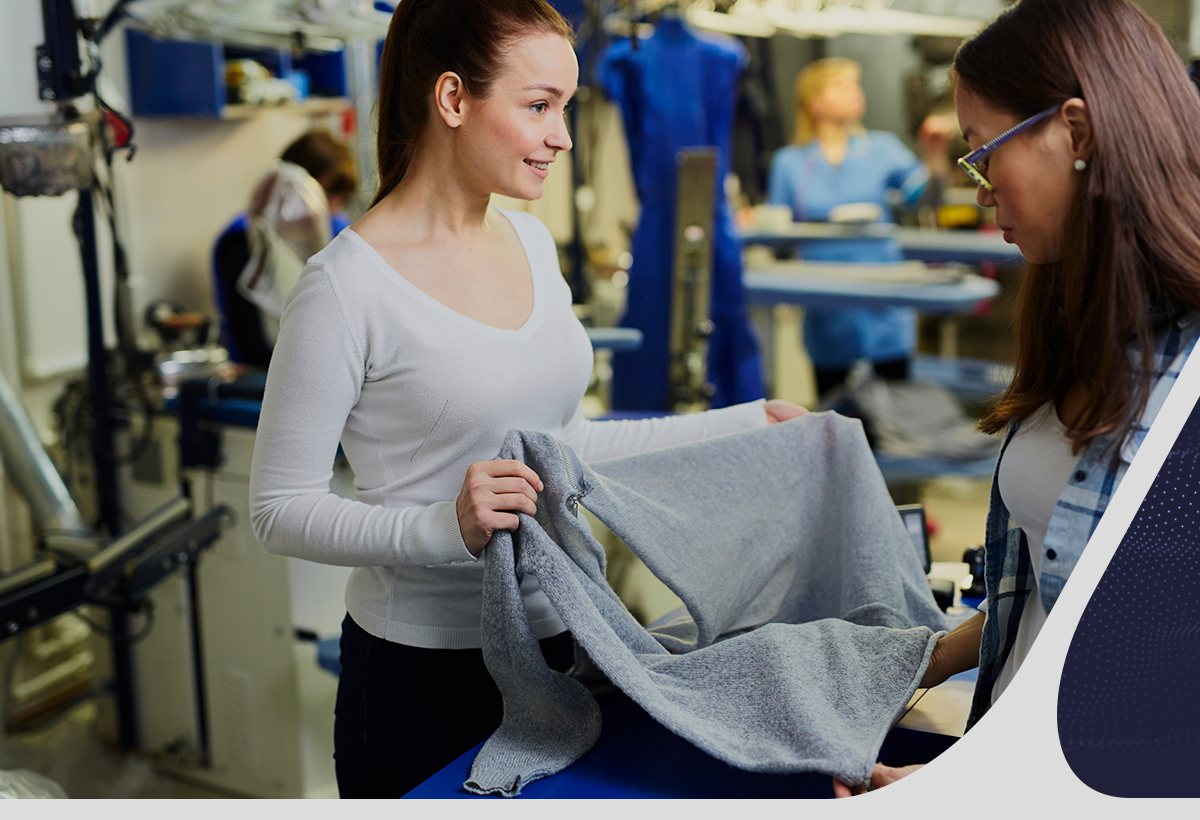Textile processing aims to refine the fabrics used in industry. It consists of several phases and processes, each of which delivers specific results.
Once done manually, this stage is now increasingly automated, bringing even more benefits to those who invest in the process.
Want to have a better understanding of the subject? Keep reading!
Textile processing: what is it and what are the stages?
According to a book on the subject, the textile processing process is “a set of operations that aims to transform textile fibers into finished products, ready for use or consumption”.
In other words, it is responsible for promoting the functionality and aesthetics of the fabrics. Thus, it is crucial to boost and elevate its added value.
In addition to commercial objectives, processing also aims to remove impurities and imperfections from the fiber. After all, it is their integrity that guarantees the quality of the final textile product.
It’s no coincidence that the actions are applied after the weaving and knitting stages, to provide only the best for the market.
To achieve this, it is categorized into a few activity categories, each of which are:
- Primary processing: prepares the material for dyeing and final finishing (pre-bleaching). It may include brushing, razoring, singeing, among others;
- Secondary processing: this involves coloring fabrics with reactive dyes, pigments, dry dyes, etc. It can be total (dyeing) or partial (printing);
- Tertiary processing: enhances the fabric’s properties, providing it with luster and a soft touch. Including marbling, splashing, spraying, waterproofing, softening, flame retardant, and others.
It’s worth noting that each textile industry has its own sequence of processes. There is no set formula. Not all practices in each category are necessary and can be customized.
How does textile processing add value to the final product?
Above, we briefly discussed how textile processing adds value to the final product. Below, however, we detail the key points related to this competitive advantage. Check it out!
-
Alteration of physical characteristics
Textile processing allows for the alteration of fabric’s physical properties, enabling its use for specialized purposes.
Flanneling, for instance, is used on thicker fabrics. On one surface, friction with the movement trims lift the fibers, providing the material its characteristic plush feel.
The shearing stage for terry occurs when circular, rotating knives cut the garment, aligning the thread ends in the same direction. This fabric is commonly used in vehicles like vans and buses.
These two processes, among others, aim to provide greater softness, shine, durability, and various other benefits.
Read also: Learn about sublimation fabrics
-
Dimensional stability
Dimensional stability is achieved through processes that clamp the fabric to the sides or pass it through heated cylinders.

1- After washing
2- After washing, still wet
3- After washing, already dry.
This allows the fabric to retain its dimensional structure (height and width) after processes such as washing and drying, thus preventing shrinkage. This is fundamental to the quality and productivity of the subsequent stages of the textile production line.
-
Personalization
Did you know that 83% of consumers prioritize personalized products and services? And that they are prepared to pay an average of up to 25.3% more for it?
Data from the Terra portal show that this trend has intensified over the years. The textile sector is no different, with processing playing a crucial role in this growth.
The fashion industry is constantly changing, with new trends emerging and old ones making a comeback.
In this context, mass customization stands out as an essential practice. It enables the production of fabrics with unique properties and specifications that can delight consumers and create additional business opportunities.
Do we need to automate textile processing?
Yes, we do!Given the stages and goals outlined, it is evident that the lack of optimization in textile processing leads to a slower and more error-prone production line.
The automation of textile processing, therefore, generates several benefits, such as:
- Automatic temperature control;
- Fast diagnosis of problems at the most critical points in the process;
- Saving on inputs, among others.
The Sample Washer, for instance, allows for agile testing in the process. In other words, a task that once took three hours can now be finished in just 20 minutes.
It also drives:
- Up to 75% reduction in material waste;
- Up to 80% reduction in water consumption;
- Lower power consumption.
On the other hand, the Mesh Inspector ensures precise inspection of the pieces, preventing failures in subsequent stages. This solution leverages AI to ensure high quality in tissue inspections, preventing defect misidentification.
Furthermore, it guarantees:
- Up to 100% increase in productivity;
- Reduced operating costs;
- Process standardization.
Conversely, with the Packaging Machineit is possible to automate the packaging of fabrics, carrying out the vacuum process and preserving moisture, avoiding exchanges with the outside environment.
Also, this textile machine packs up to 240 rolls per hour, with weighing and labeling included, optimizing production and reducing raw material costs.
Additionally, this textile machine can pack up to 240 rolls per hour, which includes weighing and labeling, thereby optimizing production and reducing raw material costs.
Finally, peripherals such as the Non-Stop Reel can be integrated into Ramas outlets, dryers, and compacting or gloss calenders. This equipment prevents stretching and enhances inspection efficiency, leading to better process optimization.
Make your textile processing more agile and efficient!
Speed up and optimize your textile processing with Delta Textile Machinery solutions! Our technology adds efficiency and value to your product.
To find out how we can help you transform your production, talk to a consultant.

